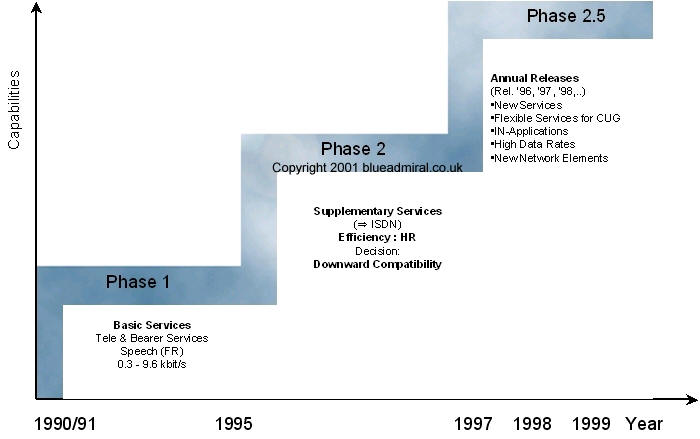|
Historical Background
1921
The Detroit Police Department in 1921 implemented a radio that system
allowed the patrol cars to communicate a central control point, although
this system has little in common with today's sophisticated modern
communications systems, it was the first mobile communications system.
1939 - 1944 (World War II)
World War II proved that the mass production of VHF radios was
possible, by the end of the 1940's there seems to be little standing in
the way of the development of mobile communications systems.
1946
By 1946 in St. Louis it became possible link a vehicle mounted
mobile radio unit to a PSTN (Public Switched Telephone Network).
PMR & PAMR (Private Mobile Radio &
Private Access Mobile Radio)
These systems were developed by during the 1950's, usually utilising
vehicle mounted units. These systems are mainly used by the emergency
services, public utilities, road haulage and taxi's. To start with these
systems were very basic single site and single channel. However they
have developed into much more complex systems, utilising multi site,
multi channel, selective calling, connections PABXs/PSTN's and direct
calling. (TETRA(Terrestrial Trunked Radio).
TACS (Total Access Communications
System)
TACS was the first real mobile communications system*. In 1985 when
this system was introduced it was mainly vehicle mounted units, but
later developed into mobile units. Unlike the other systems used around
the world TACS used the 900 MHz band.
* In the United Kingdom
GSM (Global System for Mobile
Communications)
The concept for GSM started in 1982 when CEPT (Conference for
European Post and Telecommunications Administration) formed a committee
known as Groupe Speciale Mobile. The main reason for the formation of
this committee, was to create a standard for mobile communications
within Europe. This would have several distinct advantages, such as the
user would be able to use their phone anywhere within Europe, and any
manufacturer would be able to produce any part of the overall system.
When conceived GSM was not envisaged as being a global standard.
In 1990 the design development of GSM was frozen into a set of standards
known as the "GSM Specifications".
GSM Phase 1
The standardisation of GSM900 was completed in 1990 and of DCS1800
in 1991. These standards are designated as GSM Phase 1, they include all
the central requirements for a digital cellular network. Speech
transmission (Full Rate Speech) is of central importance. Data transfer
is defined with rates of 0.3 up to 9.6 kbit/s. only a few basic
Supplementary Services (call forwarding and call baring) are included.
GSM Phase 2
The standardisation of Phase 2 was completed in 1995, the main
topics were Supplementary Services comparable with those of a fixed
network ISDN (Integrated Services Digital Network). Furthermore,
technical enhancements, e.g. Half Rate Speech, were defined. Of great
importance was the decision to enable downward compatibility to the
previous phases for all future GSM phases.
GSM Phase 2.5
GSM Phase 2.5 is characterised by a smoother transition as opposed
to the previous phase changes. No complete revision of the GSM standard
will be carried out but single topics will be handled separately. The
standard is being updated in Annual Releases since 1996. The current
topics concern new Supplementary Services, IN applications, services for
specific user groups and enabling data transmission with high data
rates.
GSM Evolutionary Concepts

Figure 1 GSM Evolutionary Concepts
(Adapted from Ericsson LZU 108 879)
|


